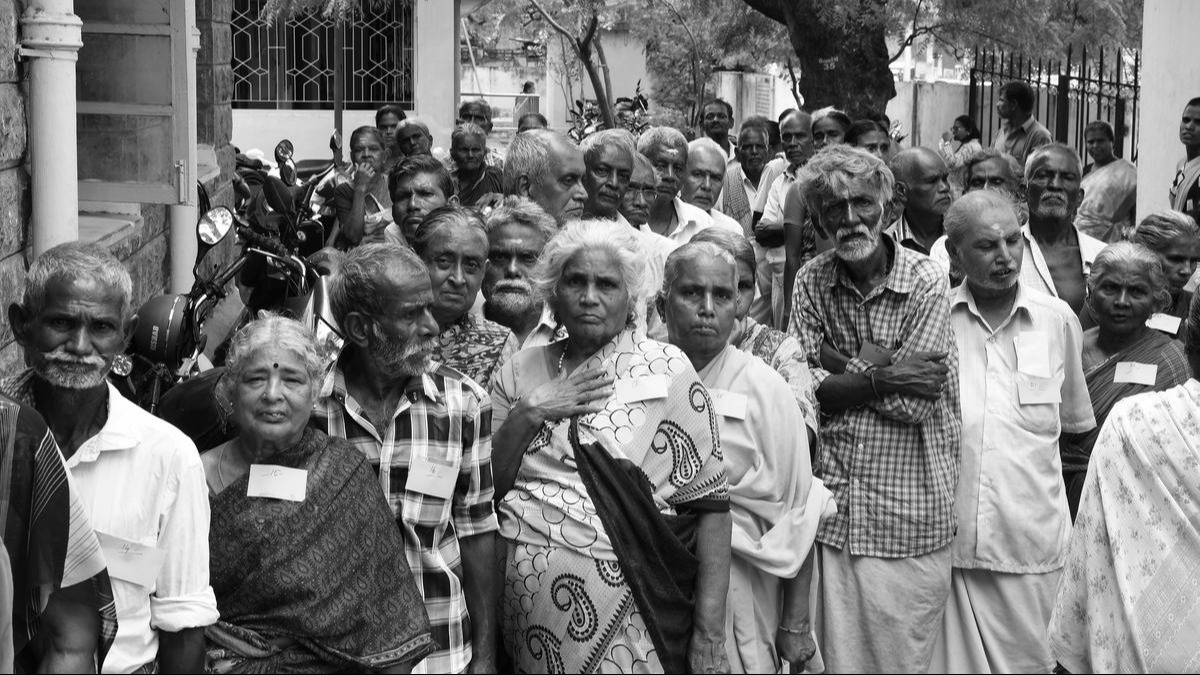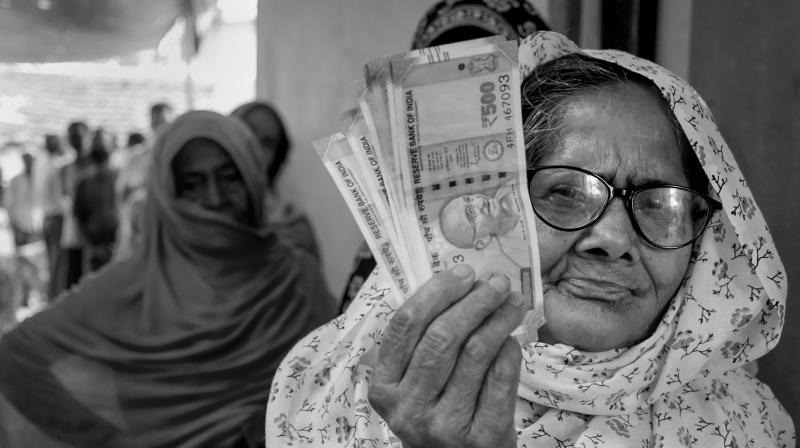
Pension
“A just society ensures dignity not only in life, but also in old age.”
1. Historical Declaration of 2023
In 2023, Rajasthan became the first state in India to recognize pension as a legal right for its citizens. This decision represented a shift from welfare-based thinking to a rights-based framework. By declaring that old age, disability, and widow pensions are entitlements guaranteed by law, the state acknowledged that citizens should not depend on arbitrary approvals or political goodwill. Instead, pensions became enforceable rights that the government is obligated to deliver. This was the result of years of persistent campaigning by social movements, especially MKSS, which highlighted the struggles of the elderly who often lived without dignity due to delayed or denied pensions. The declaration gave pensioners a legal voice to demand payments, access information, and hold officials accountable. It established the foundation for transparency, regular disbursement, and a new culture of respect towards vulnerable citizens who had long been neglected by traditional welfare systems.
2. Core Principles of the Right to Pension
The Right to Pension in Rajasthan rests on four central principles: universality, dignity, transparency, and accountability. Universality ensures that no eligible citizen is excluded on the basis of caste, gender, or location. Dignity means treating pensions not as charity but as recognition of life-long contributions by citizens. Transparency mandates that all beneficiary names, payments, and timelines be displayed publicly, both online and in panchayat offices. Accountability ensures that any delay or denial must be explained, corrected, and redressed within a fixed time period. These principles are crucial because they change the perception of pensions from optional welfare schemes to non-negotiable rights. In doing so, they empower pensioners to demand justice rather than plead for help. This framework has been widely appreciated across India as a step toward building a fairer social security system where vulnerable populations are seen as equal participants in democracy, deserving both respect and economic security.
3. Implementation and Time-Bound Delivery
One of the strongest features of the new Right to Pension law is the guarantee of time-bound delivery. Earlier, pensions were often delayed for months, forcing elderly people to live in hardship. With this law, payments must reach beneficiaries on a fixed date every month. If delays occur, officials are required to provide written explanations and take corrective steps. The law also created online dashboards where citizens can check payment status, beneficiary lists, and redressal updates. This digital integration reduces middlemen and strengthens citizen oversight. In addition, panchayat-level notice boards display the names of pension recipients, ensuring community-level accountability. The time-bound framework ensures that elderly citizens, widows, and persons with disabilities no longer have to beg for what is rightfully theirs. Instead, they can claim it confidently, knowing the law is on their side. This provision has transformed pensions into a reliable, dignified form of income security.
4. Citizen Empowerment Through RTI
A unique strength of the pension framework is its direct connection with the Right to Information (RTI) Act. Citizens who face delays, rejections, or irregularities in pension disbursement can file RTI applications to seek answers. Questions like “Why has my pension not arrived?” or “What is my status in the beneficiary list?” must be answered within a legal timeframe. This integration of RTI makes the pension law enforceable, as it provides both information and corrective action. Many elderly citizens, with the support of grassroots organizations, have successfully used RTI to expose corruption, identify ghost beneficiaries, and demand overdue payments. This system ensures that pensions are no longer trapped in bureaucratic secrecy. Instead, they are part of a transparent process where citizens can challenge failures and demand justice. By linking pensions with RTI, Rajasthan ensured that the law is not just symbolic but actively empowers people to monitor governance.
5. Role of Social Movements and MKSS
The recognition of pensions as a right was not achieved overnight. It was the outcome of decades of grassroots struggles led by organizations such as the Mazdoor Kisan Shakti Sangathan (MKSS). Through public hearings, campaigns, and policy advocacy, MKSS highlighted the plight of the elderly, disabled, and widows who suffered due to unreliable welfare systems. Their demand was simple yet powerful: dignity does not end with age, and the state must guarantee economic support. MKSS organized countless Jan Sunwais where pensioners voiced their struggles before officials, exposing systemic failures and corruption. These movements not only pressured the government but also educated citizens about their entitlements. The Right to Pension law is therefore a testimony to the strength of people’s movements. It reaffirms that democratic change is possible when citizens collectively demand justice, accountability, and recognition of their inherent rights to live with dignity and security.
6. Impact and Future Directions
The introduction of the Right to Pension has already had significant impact across Rajasthan. Thousands of elderly citizens now receive payments on time, and corruption in distribution has reduced. The law has restored dignity, reducing dependence on family or charity for survival. However, challenges remain, such as ensuring universal coverage, updating digital records, and addressing technical glitches. Future directions include expanding the law to cover more categories of vulnerable people, increasing pension amounts in line with inflation, and strengthening grievance redress mechanisms. Civil society organizations continue to monitor implementation and advocate for improvements. If effectively implemented, Rajasthan’s model can inspire other states in India to adopt similar rights-based approaches to social security. The law represents more than financial assistance—it represents justice, equality, and the recognition that every citizen deserves dignity throughout life, including in old age. It is a milestone in India’s journey toward inclusive governance.

